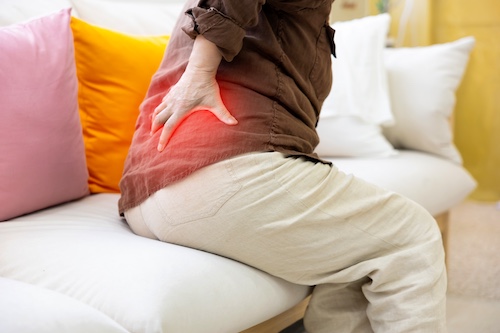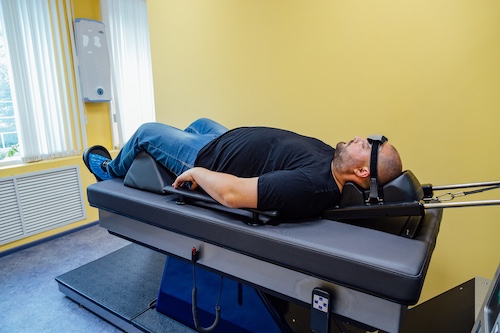Lasting Relief Without Surgery: Understanding Non-Surgical Spinal Decompression Therapy
Chronic back pain, herniated discs, and nerve compression can disrupt daily life and limit mobility. Many people turn to surgical treatment, but it is not the only option. Non-surgical spinal decompression therapy offers a non-invasive way to relieve pressure on the spine, improve disc function, and reduce pain. This treatment uses controlled traction to create space between vertebrae, helping the spine heal naturally.
In this guide, we explain how non-surgical spinal decompression therapy works, what conditions it treats, and what patients can expect during the process.
What is Non-Surgical Spinal Decompression Therapy?
Non-surgical spinal decompression therapy is a non-invasive treatment that helps relieve pressure on spinal discs and nerves. It is commonly used to manage chronic back pain, herniated discs, and other spinal conditions without surgery.
A Non-Invasive Approach to Spinal Decompression
Non-surgical spinal decompression therapy uses motorized traction to gently stretch the spine. This controlled stretching creates negative pressure within the spinal discs. The reduced pressure allows bulging or herniated discs to retract, which can relieve pressure on nearby spinal nerves and nerve roots.
Unlike surgical spinal decompression therapy, this method does not require incisions or anesthesia. It is considered a safe option for many patients experiencing chronic pain or discomfort due to disc compression.
How the Therapy Works
During spinal decompression treatment, the patient lies on a traction table connected to a computerized system. This system adjusts the angle and force of traction based on the patient’s condition. The goal is to decompress the affected area of the spine without causing strain to surrounding tissues.
The process encourages improved blood flow to the spinal discs, which can promote healing. It also reduces inflammation and supports the rehydration of intervertebral discs.
Conditions Commonly Treated
Nonsurgical spinal decompression is often used for patients diagnosed with:
- Herniated or bulging discs
- Degenerative disc disease
- Spinal stenosis
- Sciatic nerve pain
- Lumbar disc herniation
This therapy can help relieve symptoms such as back pain, leg pain, and nerve compression by reducing pressure inside the spinal canal and improving disc function.
An Alternative to Surgical Treatment
Spinal decompression surgery can involve significant recovery time and risk. Non-surgical spinal decompression provides a way to relieve pain without the need for surgical intervention. It is often used in combination with other non surgical treatments like physical therapy, cold therapy, electrical stimulation, and chiropractic care.
How Non-Surgical Spinal Decompression Works
Non-surgical spinal decompression works by reducing pressure on spinal discs and nerves using controlled traction.
The Role of Motorized Traction
Spinal decompression therapy uses a traction table connected to a computerized system. The table gently pulls the spine at precise angles. This creates space between the vertebrae and reduces pressure inside the spinal discs. The traction is adjustable to target specific areas of the spine, such as the lumbar or cervical regions.
This process is designed to relieve symptoms caused by bulging discs, herniated discs, and degenerative disc disease. It also reduces stress on the facet joints and improves mobility in the spinal canal.
Creating Negative Pressure in the Spine
One of the key effects of nonsurgical decompression therapy is the creation of negative pressure inside the spinal discs. This negative pressure helps retract herniated or bulging disc material away from the spinal nerves. It also supports the flow of oxygen, nutrients, and fluids into the intervertebral discs to promote healing.
By improving disc hydration and reducing inflammation, spinal decompression can relieve pressure on nerve roots and the spinal cord.
What Happens During a Session
A typical treatment session lasts between 20 and 30 minutes. The patient lies on the traction table, secured by a harness around the pelvis and torso. The system applies a gentle, rhythmic pulling force that alternates with periods of relaxation.
The sessions are painless. Most patients describe a mild stretching sensation in the back or legs. Some begin to experience pain relief within just a few sessions, while full results often appear after several weeks.
Supporting Recovery and Pain Relief
Spinal decompression therapy is often combined with other non surgical treatments. These may include physical therapy, electrical stimulation, cold therapy, and muscle relaxants. The goal is to reduce chronic pain, improve function, and promote long-term spinal health.
Conditions Treated by Spinal Decompression Therapy
Spinal decompression therapy helps relieve symptoms linked to disc and nerve issues by reducing pressure inside the spine.
Herniated and Bulging Discs
Non-surgical spinal decompression therapy is often used to treat herniated discs and bulging discs. These conditions occur when disc material pushes out of place and puts pressure on nearby spinal nerves. The therapy gently stretches the spine to create negative pressure, which helps pull the disc material back into position. This can relieve pain and reduce inflammation in the surrounding tissue.
Degenerative Disc Disease
Degenerative disc disease causes spinal discs to wear down over time. This can lead to chronic back pain and reduced mobility. Spinal decompression treatment helps restore space between the vertebrae and improve blood flow to the discs. The increased circulation supports healing and reduces stiffness and discomfort.
Sciatic Nerve Pain and Nerve Compression
Pressure on the sciatic nerve can cause pain that travels from the lower back down through the legs. This condition, known as sciatica, often results from a herniated or bulging disc. Spinal decompression works by relieving pressure on the nerve roots and reducing irritation. This can lead to significant pain relief and improved leg function.
Spinal Stenosis
Spinal stenosis involves the narrowing of the spinal canal. This can compress the spinal cord and cause nerve pain, weakness, or numbness. Nonsurgical spinal decompression helps by gently opening up space in the spinal canal. The therapy can relieve symptoms and improve quality of life for patients with mild to moderate spinal stenosis.
Additional Conditions and Symptoms
Spinal decompression therapy can also help with:
- Lumbar disc herniation
- Degenerated or thinning discs
- Facet joint pain
- Chronic back pain and stiffness
- Pain linked to spinal nerve compression
What to Expect During and After Treatment
Understanding the treatment process helps patients feel more prepared and confident about non-surgical spinal decompression therapy.
Before the First Session
A healthcare provider will review your medical history and perform diagnostic imaging such as X-rays or MRI scans. This step helps identify the exact location of disc damage, nerve compression, or other spinal conditions. Based on the results, a personalized treatment plan is created. Patients diagnosed with herniated discs, spinal stenosis, or degenerative disc disease are often good candidates.
During the Procedure
Each session takes about 20 to 30 minutes. You will lie on a traction table and wear a harness around your pelvis and torso. The motorized system applies gentle, controlled traction to stretch the spine and relieve pressure. Most patients feel a mild pulling sensation. The process is painless and does not require anesthesia. You may receive cold therapy, electrical stimulation, or other complementary treatments during or after the session.
Frequency and Duration
Treatment typically involves multiple sessions over five to seven weeks. Many patients attend sessions three to five times per week. Some feel relief within just a few sessions, while others experience gradual improvement. Sticking to the full schedule is important for long-term results. Your provider may adjust the treatment based on your response and pain level.
After Treatment and Recovery
Most patients can return to normal activities immediately after each session. There is no downtime or recovery period. Some may feel mild soreness, similar to what you might feel after stretching or physical therapy. The goal is to reduce chronic pain, relieve symptoms, and promote healing without the need for surgical spinal decompression or spinal fusion.
Ongoing Care and Support
Non-surgical treatment often includes support from physical therapists, chiropractic care, and pain management strategies. Your provider may recommend exercises, lifestyle changes, or muscle relaxants to support recovery. Spinal decompression therapy is one part of a complete plan to improve spine health and prevent future disc problems.
Visit Our Dalton Chiropractic Clinic For Your Spinal Injuries!
If you’re dealing with chronic back pain, herniated discs, or nerve compression, non-surgical spinal decompression therapy may help you avoid surgery and find lasting relief. Our team at Inspine Chiropractic & Wellness is here to guide you through a personalized treatment plan that supports healing and improves your quality of life.
Schedule your consultation today at (706) 459-9456!







